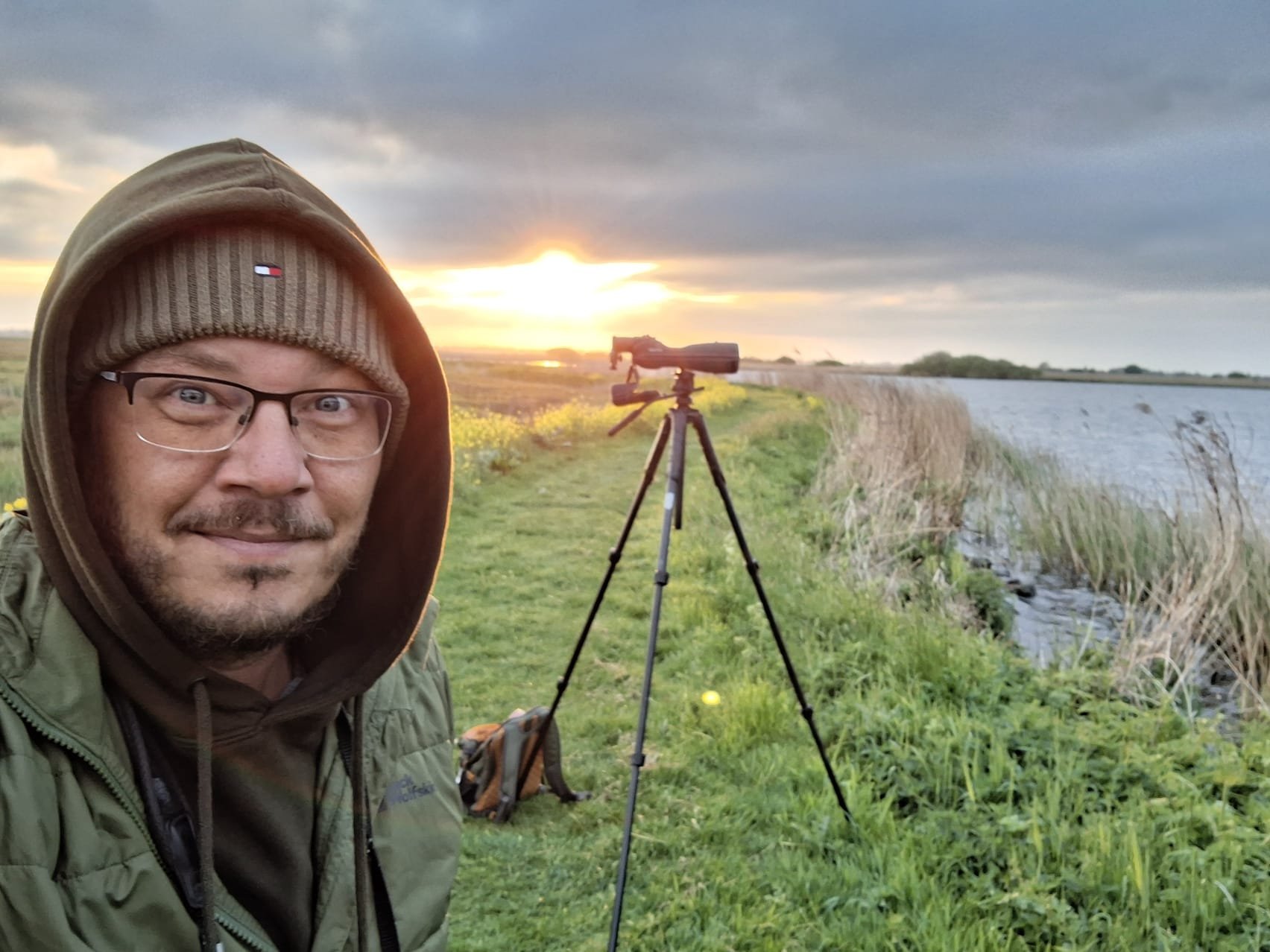Documenting a major unknown roost of Whimbrel from the Kop Bloksleat at Snitser Mar, the Netherlands. April 2025.
As a movement ecologist, ornithologist and conservation biologist I try to understand what causes birds to move the way they do, with a particular focus on how migrating birds cope with atmospheric processes at local to synoptic scales, and how learning and social behaviour moulds individual and population-level migration patterns. To do this I combine bio-logging data with atmospheric models, remote sensing data and old-school field observations. On a more philosophical level I try to understand what our rapidly changing world looks like from a bird’s perspective, and to take birds seriously as sentient co-inhabitants of our precious planet.
On this website you’ll find summaries about most of my ongoing research and past projects, a list of my scientific and popular publications, some highlights from my lectures, and media appearances.
AWARDS
BOU Early Professional Award 2024
Awarded by: British Ornithologists’ Union
For: “an outstanding initial contribution to the field of ornithology’ in research, community activities, capacity building and mentorship, and/or science communication and engagement. Remarkably, Wouter has made outstanding contributions in all of these areas”. Full citation by Jennifer Gill in Ibis Journal.
Academic Year Prize 2013
Awarded by: NWO, NRC Media, KNAW & VPRO/NTR
For: team member of the ‘Vogel het uit!’ project for participative science and science communication.
WORKING AT …
BirdEyes - Centre for Glocal Ecological Change (NL) - Faculties of Science & Engineering and Campus Fryslan
University of Groningen
Senior researcher - coordinating Spoonbill research under www.waakvogels.nl (2025-present)
Theoretical and Computational Ecology -
Institute for Biodiversity and Ecosystem Dynamics
University of Amsterdam (NL)
Guest Researcher (2016 - present)
BOARD MEMBER of…
Batumi Raptor Count (GEO)
Co-founder & Research coordinator (2008 - present)
PREVIOUS EDITORIAL POSITIONS
Ibis - British Ornithologists Union
(2017 - 2022)
Ardea - Dutch Ornithological Union
(2018 - 2022)
Natuur.oriolus - Natuurpunt.studie
(2017 - 2021)
PREVIOUS BOARD POSITIONS
Dutch-Georgian Ornithological Foundation (NL)
Board member (2017 - 2020)
Migrant Landbird Study Group
Co-founder & Secretary (2014 - 2018)
Previous affiliations
BirdEyes - Centre for Glocal Ecological Change (NL) - Faculties of Science & Engineering and Campus Fryslan
MAVA-Doñana Fellowship
University of Groningen
Senior researcher (Apr 2022 - Mar 2025)
Estación Biológica de Doñana (ES)
Juan de la Cierva Formación Fellowship
Figuerola Lab, Dept Wetland Ecology
Postdoc (Apr 2019 - Aug 2021)
Vansteelant Eco Research (NL)
Freelance ecologist (Jun 2016 - Jun 2019)
Chamber of commerce: 66266858
VAT-nr.: NL683203320B01
Dutch Montagu´s Harrier Foundation (NL)
Research biologist (Apr 2017 - Apr 2019)
Novia University of Applied Sciences (F)
Postdoc (Sep 2017 - Jan 2018)
Hawk Mtn. Sanctuary (PA, USA)
Guest Researcher (Feb - Mar 2017)
Conservation Leadership Intern (Mar - Jun 2011)
Theoretical and Computational Ecology -
Institute for Biodiversity and Ecosystem Dynamics
University of Amsterdam
Postdoc (Aug - Dec 2015)
Ph.D. candidate (Jul 2011 - Aug 2015)
